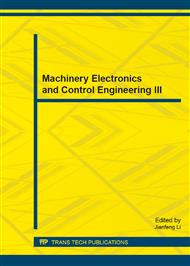p.461
p.465
p.470
p.476
p.480
p.484
p.488
p.493
p.498
Numerical Simulation about Stretching Process in Different Layers of Cartilage
Abstract:
Cartilage with complex structure is a porous viscoelastic material. The direction of arrangement of collagen fibers in different layer regions directly affects the mechanical properties of the cartilage layer region. It is very important to use the method of numerical simulation for studying cartilage damage and repair through experimental measurements of cartilage mechanical parameters of the different layers. Because of the relatively small size of the cartilage, it is very difficult to measure mechanical parameters of cartilages by tensile test. The paper for main problems in the tensile test of cartilages, first by porcine articular cartilage compression testing, measuring the displacement of cartilage areas of different layers, according to the characteristics of the displacement determines the size of areas of different layers of cartilage, and then designed the cartilage and substrate stretching models. Model includes two forms of direct bonding and embedding bonding to simulate stretching process of different layers of the cartilage area in numerical way, displacement fields and stress-strain fields of stretching cartilage in different layer regions are derived. The numerical results show that using the way of embedded bonding can make stress of articular well-distributed without stress concentration, so it is a good way of bonding methods. Paper of the research work laid the foundation for measuring mechanical parameters of cartilage by stretch experiment.
Info:
Periodical:
Pages:
480-483
Citation:
Online since:
December 2013
Authors:
Price:
Сopyright:
© 2014 Trans Tech Publications Ltd. All Rights Reserved
Share:
Citation:


